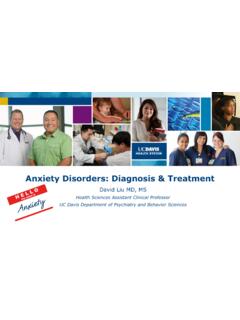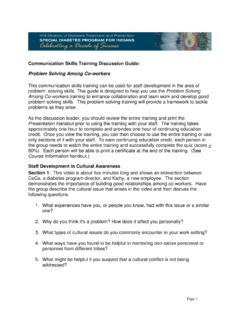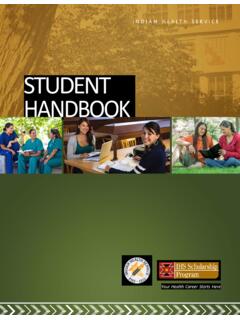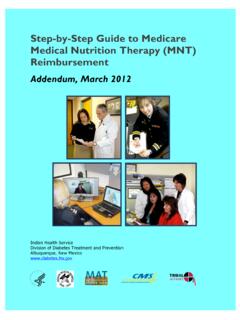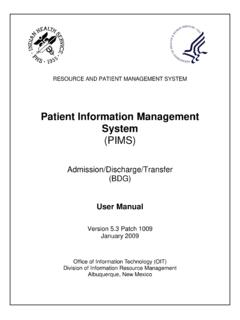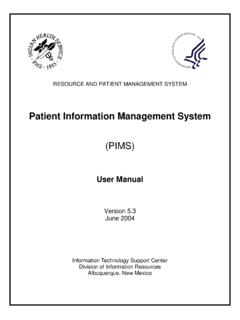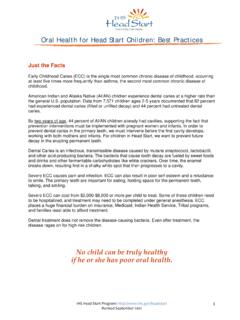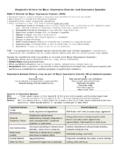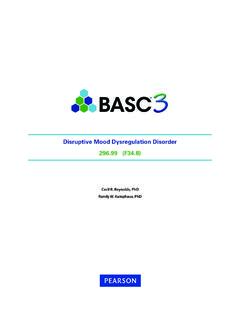Transcription of Bipolar Disorder in Children and Adolescents
1 Bipolar Disorder in Children and AdolescentsMolly Faulkner, PhD, CFNP, LISWU niversity of New MexicoDepartment of PsychiatryChild Bipolar I Disorder is a contentious diagnosis. Barbara Geller, Incidence of Bipolar Disorder in Children2. Describe 3 criteria of Disruptive Mood DisregulationDisorder in the new DSM 5 3. Identify 2 Comorbidities with Childhood Bipolar Disorder4. Explain 2 criteria that Differentiate Bipolar Disorder from ADHD or DMDD Agenda Bipolar Disorder Epidemiology Definitions Genetics, Bipolar vsADHD vsDMDD Bipolar vsSchizophrenia Psychopharmacological Treatment Assessment, Triage and Treatment What IsBipolar Disorder ?Epidemiology Problemswith obtaining good data Prevalence and validity of the dxin Children remains controversial. Onset prior to age 10 occurs in only to of Bipolar patients to 1% was thought to be incidence but new data of meta analysis estimates it to be higher. Epidemiology: Meta-AnalysisVan Meter, Moreira, Youngstrom(2011) Studies from 1985-2007 16,222 youths between ages of 7 and 21 6 Samples from US and 6 from Netherlands, United Kingdom, Spain, Mexico, Ireland, and New Zealand No significant differencein the mean rates between US & non-US studies US studies had a wider range of rates, highest BPAD NOS.
2 Overall prevalence of Bipolar Disorder was (95% CI, ), higher than the previous studies Symptoms may be present since infancy or early childhood, or may suddenly emerge in adolescence or adulthood. Some studies indicate 59% of adults with Bipolar Disorder had first symptoms in childhoodOnly been in past 6 yrs or so that clinicians generally accept that Bipolar Disorder is a childhood onset "The thought that a child can be too happy, too cocky, too exuberant, is anathema to many people. But when we're talking about childhood Bipolar I Disorder , we are talking about Children who are so silly and giddy that families are asked not to bring them to church; who are so cocky, expansive, and grandiosethat they go to the principal's office and tell them to fire teachers they don't like; bright kids who fail classes because they are fully convinced they know it all and don't study," Geller. Pediatric Bipolar disorderNarrow phenotype: Classic presentation of Bipolar Disorder (grandiosity, hypersexuality, elation)Broad phenotype: irritability, not necessarily episodic - non episodic severe irritability coupled with symptoms of hyperarousala developmental presentation of BPAD?
3 Child Bipolar I DisorderProspective Continuity With Adult Bipolar I Disorder ; Predictors of 8-Yea r OutcomeOctober 2008 Barbara Geller, Archives of General Psychiatry Prospective, longitudinal study of 115 Children , mean age 11 years dx1st episode of child bpadfrom 1995 to 1998 & followed for 8 yrs. weeks with any mood episodes & weeks with maniaepisodes, during 8-year follow-up recovered from maniaBUT relapsed to mania18yrs+ had manic episodes had substance use disorders Supports childhood onset hypothesis Chronic, unremitting nature of this illness in Children into adulthood Longer episodes with ultra rapid cyclingFamily HistoryGenetics-offspring of parents with Bipolar Disorder were times higher risk for developing a psychiatricdisorder & fourfold higher risk (14 50%) for developing a mood Disorder (Chang, Steiner, & Ketter, 2000). Degree of familiarity increased in early-onset cases Lifetime rates of BPAD approx 15% in first degree relatives Monozygotic twins 60% concordance rateCharacteristics turbulent, dysfunctional lives poor academic performance impaired peer and family relationships alcohol and substance abuse in famhx suicidal behaviorGender Issues BPAD affects both sexes equally.
4 Early-onset cases, males > females Especially w/onset before age of 13 years Depressive disorders females > malesIntelligence Over 90% of youth with Bipolar Disorder have normal IQs which positively influences prognosis BPAD- including rapid cycling, found in patients w/moderate to severe mental retardation, autism, and trisomy21 BPAD criteria DSM 5 DSM IV TR Classification and Definitions for Mood DisordersBipolar I Manic episodes with or without depression, w/ mixed features specifierBipolar II Major depression with hypomaniaBipolar Disorder -not elsewhere defined (NED) criteria not met for Bipolar I, Bipolar II, cyclothymiaor have too few manic symptomsManic and depressive symptoms lasting at least 1 weekManiaAn abnormally and persistently elevated, expansive, or irritable mood, lasting at least a weekHypomania A persistently elevated, expansive, or irritable mood, lasting at least 4 days, that is clearly different from the usual nondepressedmoodCyclothymia Chronic fluctuating mood disturbances hypomania and minor depressive symptoms 2 yrsfor adults and 1 yrfor childrenRapid cycling Four or more episodes per yearUltrarapidcycling Five to 364 episodes per yearUltraradiancycling Mania is present for more than 4 hr/dayBipolar Disorder DSM 5 Conceptual Changes Bridge btwnpsychotic disorders & depressive disorders BPAD I essentially unchanged BPAD II no longer considered a milder form of BPAD I due to the severity of their depressions and severity of work & social impairment During the period of mood disturbance, 3 (or more) of the following symptoms have persisted (4 if the mood is only irritable) and have been present to a significant degree.
5 Distractibility ( , attention too easily drawn to unimportant or irrelevant external stimuli) Increase in goal-directed activity(either socially, at work or school, or sexually) or psychomotor agitation) Excessive involvement in pleasurable activities that have a high potential for painful consequences ( , engaging in unrestrained buying sprees, sexual indiscretions, or foolish business investments Inflated self-esteem or grandiosity Decreased need for sleep ( , feels rested after only 3 hours of sleep) More talkativethan usual or pressure to keep talking Flight of ideas or subjective experience that thoughts are racing Specifiers With anxious distress With mixed features With rapid cycling With mood-congruent psychotic features With catatonia. Coding note: Use additional code ( ). With peripartumonset With seasonal patternSpecifiers With anxious distress:The presence of at least 2 of the following symptoms during the majority of days of the current or most recent episode of mania, hypomania, or depression: Feeling keyed up or tense.
6 Feeling unusually restless. Difficulty concentrating because of worry. Fear that something awful may happen. Feeling that the individual might lose control of himself or Add to Criterion A: and abnormally and persistently increased goal-directed activity or energy. Bipolar and Related DisordersNo Mixed Episodes (was: full Manic + MDD nearly every day/ 1 week) Now a specifier: with mixed features HypomanicManic + 3/6 MDD symptomsor MDD + 3/7 Manic symptoms With Mixed Features Specifier New specifier"with mixed features" can be applied to Bipolar I Disorder , Bipolar II Disorder , Bipolar Disorder NED (previously called "NOS") and MDD Recognition that "mixed" mood states that do not meet full criteria for a mixed episode of Bipolar I Disorder are common In DSM 5, the predominant mood can either be depression, mania, or hypomania The secondary mood can be "subclinical Subtypes Manic symptoms in youth- freq not long enough to meet the 1-week duration criteria for manic episode & esptrue for Children .
7 Youth more likely to have Bipolar II or Cyclothymicdisorder, rather than Bipolar I Disorder . Children & Adolescents may also be more likely than adults to present with rapid-cycling aka ultradianepisodes (Geller et al. 2004)~ euthymia, depression, mania within a day Gelleret al. (1995) found that in 26 patients with early-onset Bipolar Disorder (ages 7 to 18 years), 81% had a rapid-cycling BPAD Diagnosed More? Late 1990s and into 2000s, increased number of Children being diagnosedwith bpad No criteria for Children with bpadever established Researchers developed own criteria that replaced manic/hypomanic episodes with irritability and angerBPAD DxMore (cont d) Atypical antipsychotics were developed Prescribers diagnosed bpadin Children with criteria of irritability and anger AAs prescribed more frequently Led to 40 fold increase in past 10 years of bpaddx in childrenPediatric Bipolar Disorder Between 1996 and 2004 rates of Children with a hospital discharge diagnosis of Bipolar Disorder rose from to per 10000 Discharges of Adolescents with BPAD increased 400%Disruptive Mood DysregulationDisorderA.
8 Severe recurrent temper outbursts grossly out of proportion in intensity of duration Temper Outburstsverbally (rages) and/or behaviorally (physical aggression people or property)Inconsistent with Developmental LevelDisruptive Mood DysregulationDisorderB. Frequency: temper outbursts on average 3 or more x per weekC. Mood between temper outbursts:1. Nearly every day, most of day, mood between persistently irritable or angry 2. Irritable or angry mood observable by others (parents, teachers, peers)D. Duration: criteria A-C present 12 or more months. During this time person has not had 3 or more consecutive months when without symptoms of criteria in 2 or more settingsAges 6 and 10 DMDD Some symptoms present in other child psychiatric disorders depression, Bipolar Disorder oppositional defiant Disorder . Some Children also have a second Disorder , such as problems with attention or anxiety. important to get a comprehensive evaluation by a trained & qualified mental health Captures Children with frequent temper tantrums and irritability Less research is available on DMDD than on most other DSM 5 diagnoses Placed in DSM 5 due to concerns about overdiagnosisof BPAD -prepubertalonset of these symptoms Natural history - Children at risk for MDD and anxiety disorders as adults rather than Bipolar Disorder Treatment: SSRIs might be indicated, given developmental outcome Concerns: validity and specificity still unclear, will it result in over diagnosis of normal Children ?
9 Comorbid Conditions ADHD Conduct Disorder Substance abuse disordersComorbidities with BPAD ADHD-60-90% 69% rate of conduct Disorder (Kovacs & Pollack, 2005) Substance abuse Depression Anxiety disorders Tourettesyndrome Bulimia Nervosa PDD (Birmaheret al., 2002; Lewinsohn et al., 1995; West et al., 1996; Wozniak et al., 1997, 1999, 2001).ADHD as Comorbidity Present in 60 to 90% of Bipolar Pts Biedermanet al. (2004), Three overlapping these sxare unlikely to be present every day in child with as Comorbidity ADHD alonedoes nothave persistent mood instability with explosive outbursts as seen in Bipolar Disorder . BPAD Children Three common symptoms not usually observed in Children with mood, of ideas (Geller et al., 2002).Is it BPAD or ADHD or BOTH? Strong family history of Bipolar Disorder Mean & hurtful style of social interaction which is typically not seen with kids with ADHD Sexualized to a worrying extent, but no history of sexual abuse.
10 Grandiose statements regarding their strengths & abilities Comments & actions might make adults in their environment feel year old boy, raised by single mother, has younger brother with whom he moodiness, fastidiousness, emo , persistently irritable mood, angry, disrespectful to mother, adults at school, extremely poor judgment, thinks adults overreact to his delinquency. Cognitively above averageDiagnosis?Questions?Further eval?Treatment?Mania Behavior Agitation Decreased need for sleep Energy increase Goal directed activity increased Talkative, rapid, speech Cognition Distractibility Flight of ideas Racing thoughts Grandiosity Self-esteem increased Interpersonal High-risk pleasurable behavior More talkative Recklessness Sexual behavior increased Social disinhibitionDepression Behavior Agitation Appetite decrease/weight decrease Appetite increase/weight gain Energy reduction Excessive sleep Insomnia Psychomotor retardation Cognition-Anhedonia-Confidence diminished-Concentration reduced-Indecisiveness-Morbid ideation Emotional Distress-Blunting of emotions-Guilt/self-reproach-Hopelessnes s-Self esteem reduced-Suicidal plans, acts, ideation-Thoughts of deathSymptoms (that could be)
